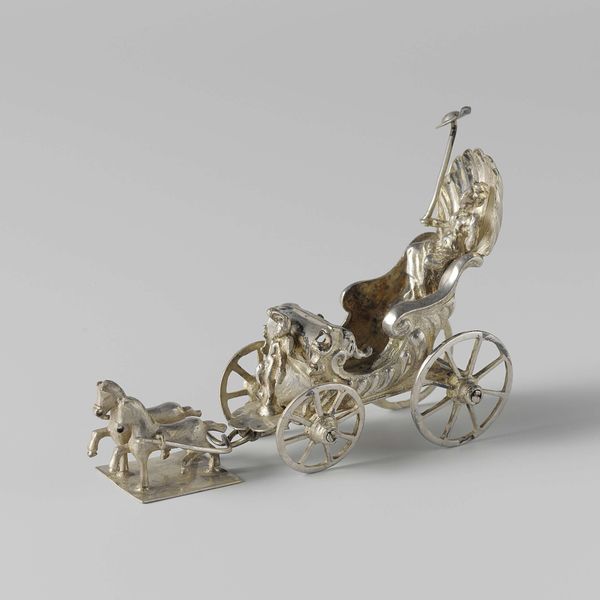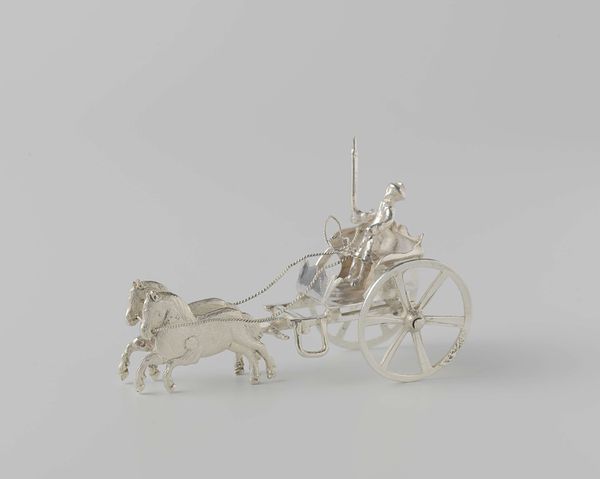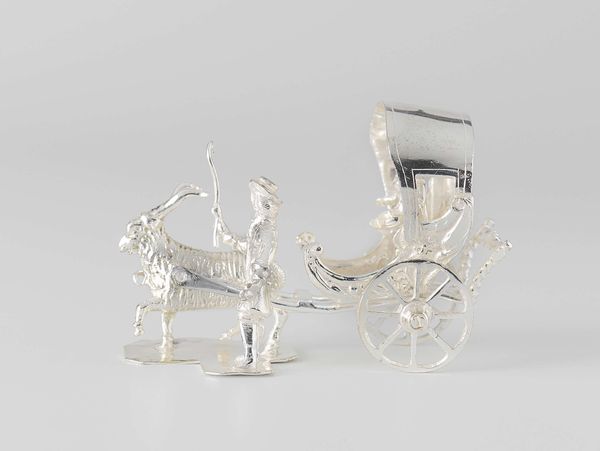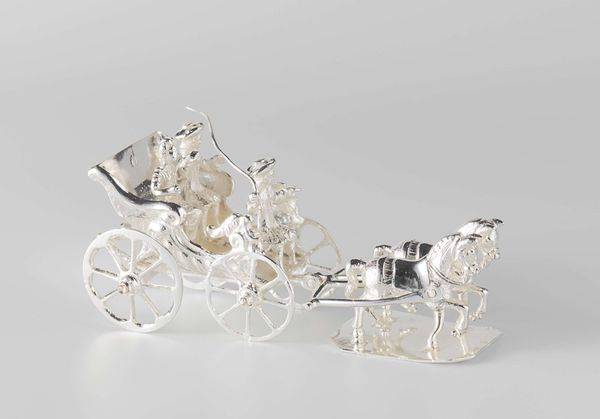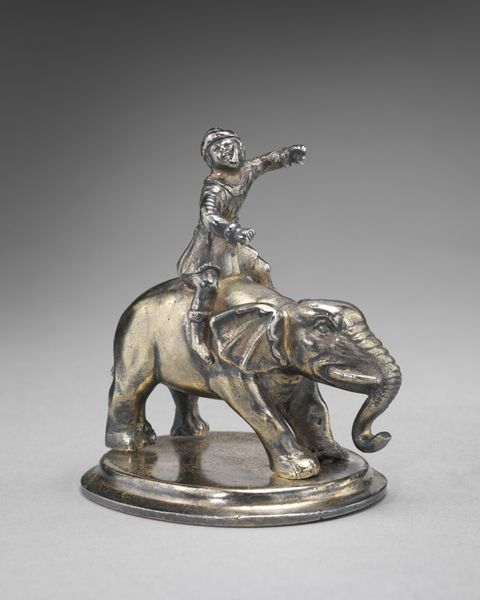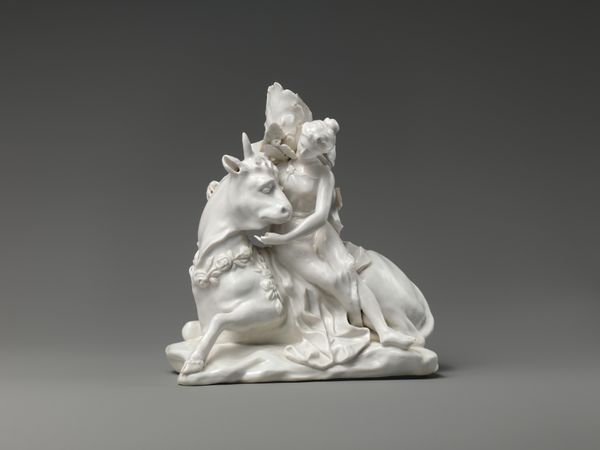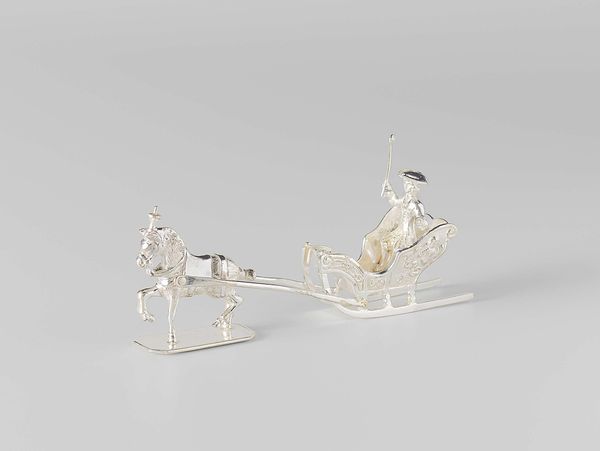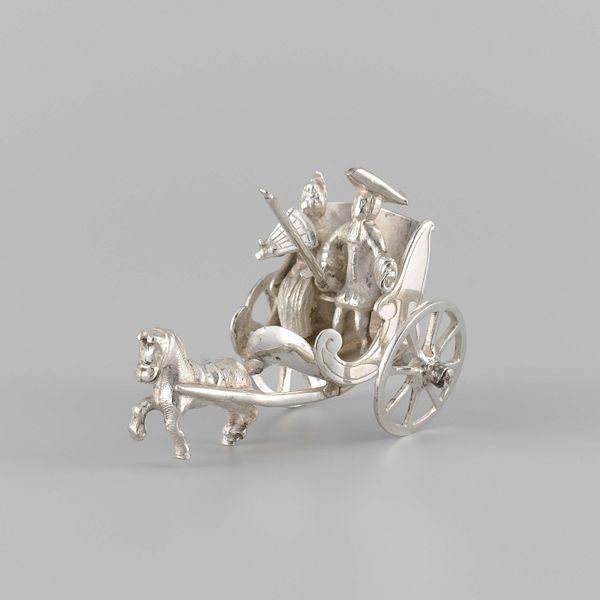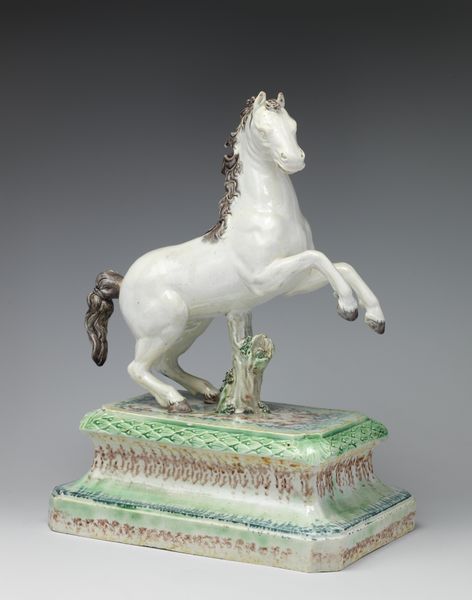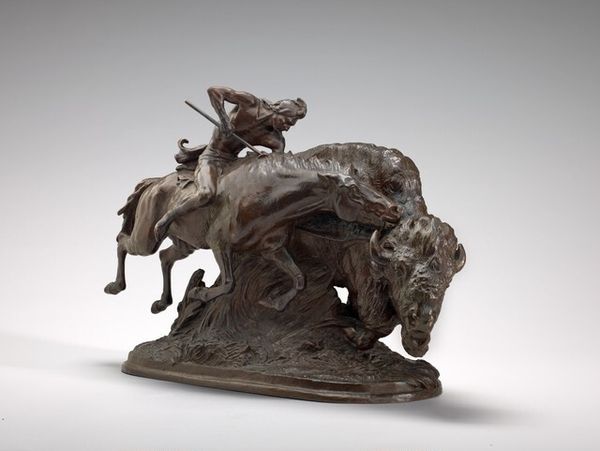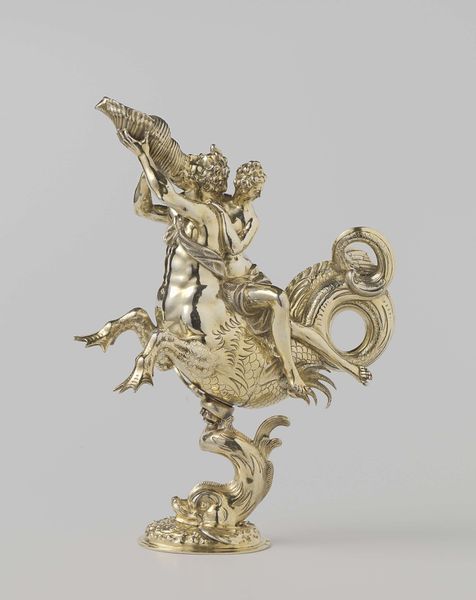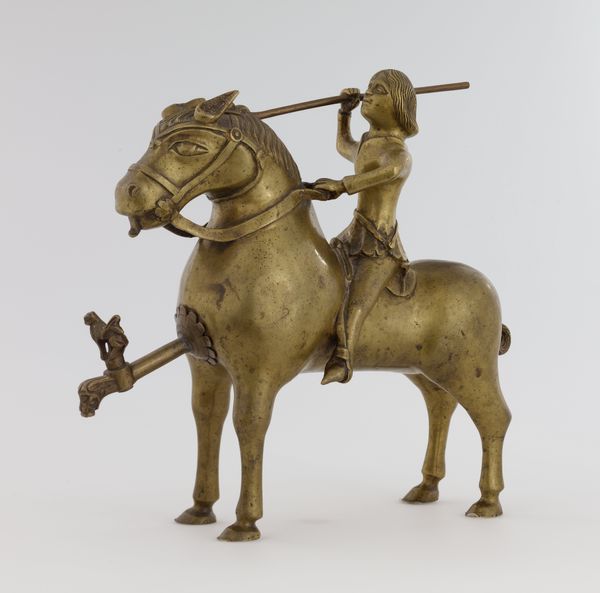
silver, metal, sculpture
#
silver
#
baroque
#
metal
#
figuration
#
sculpture
#
miniature
Dimensions: length 6.8 cm, height 6.1 cm, weight 49.14 gr
Copyright: Rijks Museum: Open Domain
Curator: This exquisite miniature is a silver sculpture titled "Sjees," crafted by Pieter van Somerwil in 1737. Editor: It's immediately striking – so ornate, yet small enough to hold in your hand. The baroque details, especially on the chariot, are captivating. There’s a sense of grandiosity in miniature, wouldn’t you agree? Curator: Absolutely. Van Somerwil operated during a period where decorative arts were thriving, particularly in the service of affluent patrons. These types of miniatures often served as symbols of status, echoing larger societal concerns around wealth and class. This wasn't simply decorative; it was a display of power and taste, shrunk down to a manageable, portable size. Editor: The single horse pulling the "Sjees"— the light, open carriage – is also interesting. It looks like a proud, almost prancing creature. What would that single horse symbolise to its original audience? Is there a connotation related to commerce, trade or, perhaps, more specific meaning embedded in Dutch culture? Curator: It likely played on the cultural importance of equestrianism in the Netherlands at the time, but it's tricky to pin down specifics. Dutch society was becoming increasingly mobile in the 18th century. Therefore, there are several symbolic meanings ranging from wealth to transportation, personal mobility to the more obvious associations with status. It may simply be that this was intended as a playful reference to the transportation habits of the wealthy elite. Editor: Thinking of visual culture, the gleaming silver adds to the overall feeling of luxury. The sheen catches the eye, elevating it beyond a mere representation of a horse and carriage to an ideal, wouldn’t you say? What I wonder is, how was its cultural value received at that time? I wonder if it carried the same status significance, or it's only by looking back that the meanings can be fully extracted. Curator: That's a crucial point. As cultural objects travel across time, meanings shift and accumulate. Van Somerwil’s audience would have appreciated the skill and artistry on display, as well as the object's reflection of their own status within a complex social system. To them, the politics of imagery must have felt tangible. Editor: It is still enchanting, to be honest! The small scale and precision demand admiration, then and now. It makes one wonder what other tales this little “Sjees” could tell. Curator: Precisely, and considering its journey through history, "Sjees" stands as a tiny emblem of artistic ingenuity and cultural pride that also challenges how we engage with historical images.
Comments
No comments
Be the first to comment and join the conversation on the ultimate creative platform.
